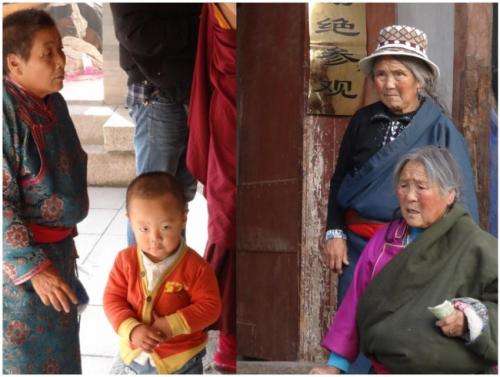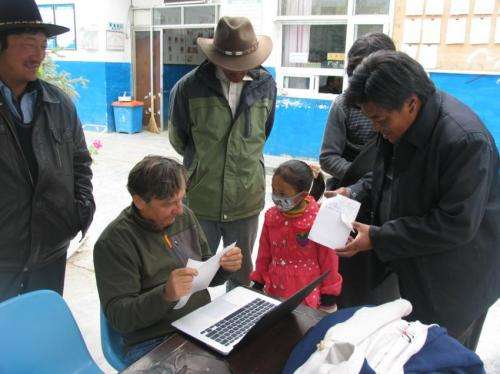8,000-year-old mutation key to human life at high altitudes

In an environment where others struggle to survive, Tibetans thrive in the thin air on the Tibetan Plateau, with an average elevation of 14,800 feet. A study led by University of Utah scientists is the first to find a genetic cause for the adaptation – a single DNA base pair change that dates back 8,000 years – and demonstrate how it contributes to the Tibetans' ability to live in low oxygen conditions. The study appears online in the journal Nature Genetics on Aug. 17, 2014.
"These findings help us understand the unique aspects of Tibetan adaptation to high altitudes, and to better understand human evolution," said Josef Prchal, M.D., senior author and University of Utah professor of internal medicine.
The story behind the discovery is equally about cultural diplomacy as it is scientific advancement. Prchal traveled several times to Asia to meet with Chinese officials, and representatives of exiled Tibetans in India, to obtain permissions to recruit subjects for the study. But he quickly learned that without the trust of Tibetans, his efforts were futile. Wary of foreigners, they refused to donate blood for his research.
After returning to the U.S., Prchal couldn't believe his luck upon discovering that a native Tibetan, Tsewang Tashi, M.D., had just joined the Huntsman Cancer Institute at the University of Utah as a clinical fellow. When Prchal asked for his help, Tashi quickly agreed. "I realized the implications of his work not only for science as a whole but also for understanding what it means to be Tibetan," said Tashi. In another stroke of luck, Prchal received a long-awaited letter of support from the Dalai Lama. The two factors were instrumental in engaging the Tibetans' trust: more than 90, both from the U.S. and abroad, volunteered for the study.

First author Felipe Lorenzo, Ph.D., spent years combing through the Tibetans' DNA, and unlocking secrets from a "GC-rich" region that is notoriously difficult to penetrate. His hard work was worth it, for the Tibetans' DNA had a fascinating tale to tell. About 8,000 years ago, the gene EGLN1 changed by a single DNA base pair. Today, a relatively short time later on the scale of human history, 88% of Tibetans have the genetic variation, and it is virtually absent from closely related lowland Asians. The findings indicate the genetic variation endows its carriers with an advantage.
Prchal, collaborated with experts throughout the world, to determine what that advantage is. In those without the adaptation, low oxygen causes their blood to become thick with oxygen-carrying red blood cells - an attempt to feed starved tissues - which can cause long-term complications such as heart failure. The researchers found that the newly identified genetic variation protects Tibetans by decreasing the over-response to low oxygen.
These discoveries are but one chapter in a much larger story. The genetic adaptation likely causes other changes to the body that have yet to be understood. Plus, it is one of many as of yet unidentified genetic changes that collectively support life at high altitudes.
Prchal says the implications of the research extend beyond human evolution. Because oxygen plays a central role in human physiology and disease, a deep understanding of how high altitude adaptations work may lead to novel treatments for various diseases, including cancer. "There is much more that needs to be done, and this is just the beginning," he said.

At the beginning of the project, while in Asia, Prchal was amazed at how Tashi was able to establish a common ground with Tibetans. He helped them realize they had something unique to contribute. "When I tell my fellow Tibetans, 'Unlike other people, Tibetans can adapt better to living at high altitude,' they usually respond by a little initial surprise quickly followed by agreement," Tashi explained.
"Its as if I made them realize something new, which only then became obvious."
More information: "A genetic mechanism for Tibetan high-altitude adaptation" will be published online on Aug. 17, 2014, in Nature Genetics: dx.doi.org/10.1038/ng.3067



















